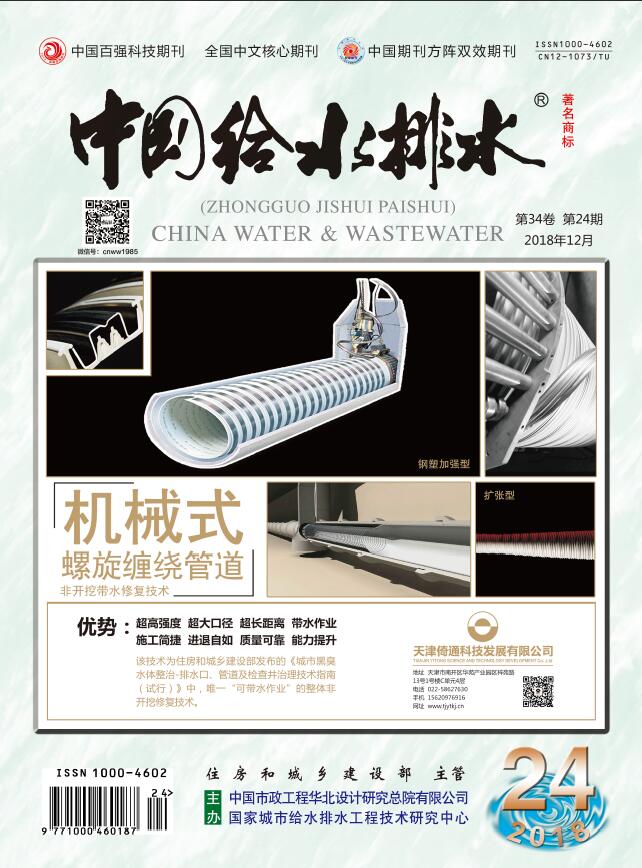LIUQi-xin,FENGXuan,CHENNing,et al.Micro-response Characteristics of Aerobic Granular Sludge under Stress of Ribavirin[J].China Water & Wastewater,2024,40(23):29-39.
Micro-response Characteristics of Aerobic Granular Sludge under Stress of Ribavirin
China Water & Wastewater[ISSN:1000-4062/CN:12-1073/TU]
volume:
第40卷
Number:
第23期
Page:
29-39
Column:
Date of publication:
2024-12-01
- Keywords:
- aerobic granular sludge; ribavirin; extracellular polymeric substances; signal molecule; microbial community composition
- Abstract:
- The emergence of corona virus disease (COVID-19) has resulted in the widespread utilization of numerous antiviral medications, leading to the discharge of certain drugs and their metabolites into wastewater treatment plants (WWTPs) through sanitary sewers. Notably, the presence of antiviral drug ribavirin has been identified in both WWTPs and natural water bodies. Consequently, this paper investigated the removal efficiency of aerobic granular sludge (AGS) under ribavirin stress and examined the microscopic response characteristics of AGS to such stress, thereby elucidating the regulatory factors and stability maintenance mechanisms involved in the formation of AGS. Throughout the development of AGS, the ribavirin removal efficiency exhibited a continuous increase, ultimately stabilizing at over 99%, and the removal was primarily through biodegradation. Tightly bound protein (TB-PN) served as a crucial component of extracellular polymeric substances (EPS), both in the presence and absence of ribavirin stress. Ribavirin stress showed to enhance EPS secretion by microorganisms during the early stage of AGS culture, suggesting that AGS exhibited a protective response to ribavirin-induced stress. Furthermore, an excessive secretion of EPS augmented electron transfer efficiency among functional microorganisms, thereby enhancing the pollutants degradation efficacy. Under conventional culture conditions, the concentration of C8-HSL in AHLs exhibited a positive correlation with the contents of protein and polysaccharide in EPS, indicating that C8-HSL served as a crucial signaling molecule to enhance the synthesis of TB-PN. Under ribavirin stress, C8-HSL played a more pivotal role in directing the synthesis of polysaccharides, suggesting that ribavirin might interfere with or inhibit the TB-PN synthesis pathway. Correlation analysis of C4-HSL further corroborated that ribavirin stress induced alterations in the metabolic pathways of sludge microorganisms. Ribavirin stress exerted a significant interference effect on the microbial community composition, promoting the dominant proliferation of signal molecule synthesizing bacteria such as Acidovorax, drug-resistant bacteria including Acinetobacter and Delftia, along with other bacterial species that secreted biotoxic factors during the early stage of AGS culture. Nevertheless, the microbial community composition within the AGS system ultimately achieved a high degree of similarity across various conditions, suggesting that microbial diversity and community succession were pivotal factors contributing to the stability and effective pollutants removal capabilities of the AGS system.
Last Update:
2024-12-01

